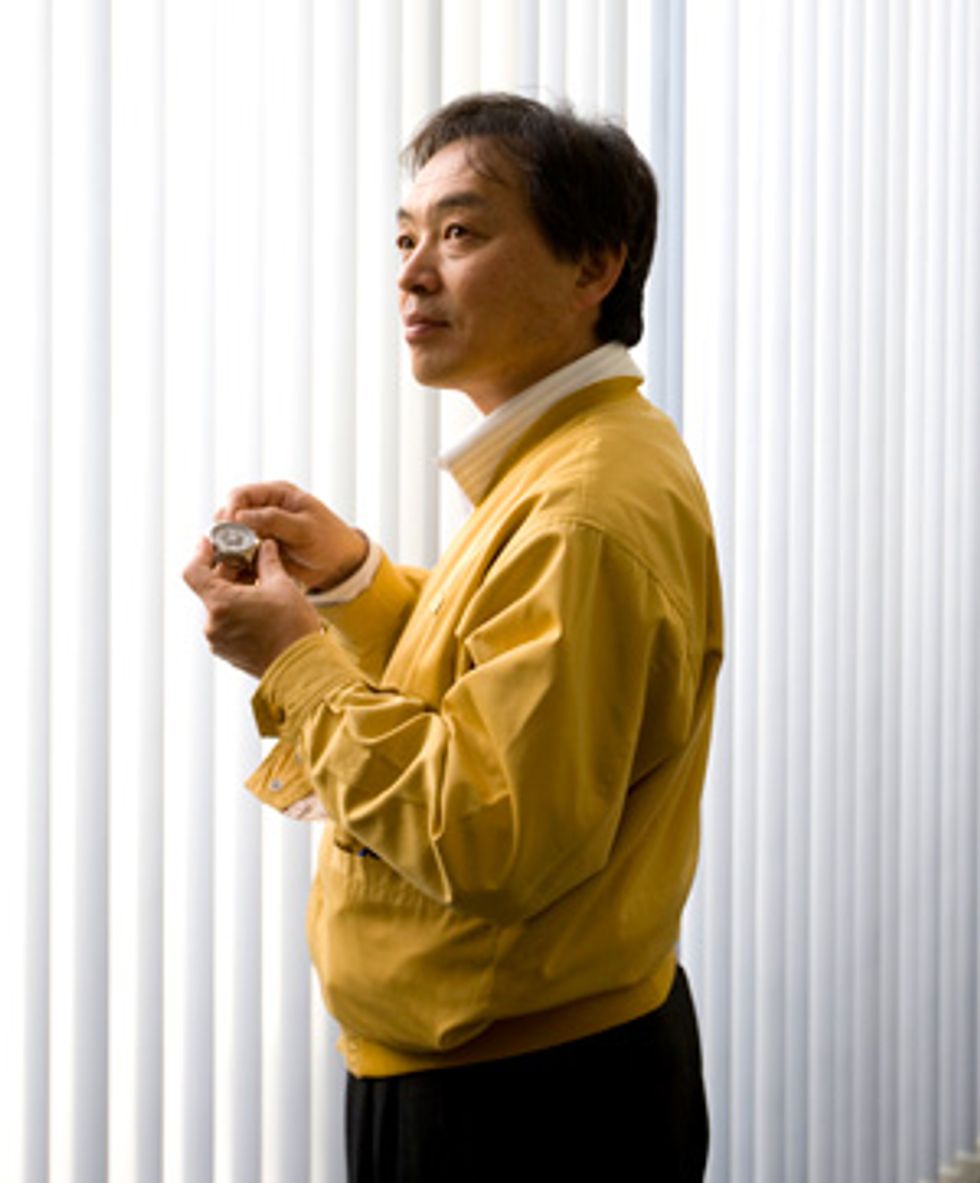Kunio Koike: Real Time
This Seiko engineer makes every second count

This profile is part of IEEE Spectrum’s Special Report on Dream Jobs 2009.

When video-game entrepreneur Richard Garriott blasted off on his US $30 million space ride last October, he carried into orbit a remarkable piece of advanced technology: his wristwatch. Not any wristwatch, mind you, but a Seiko Spring Drive electromechanical timepiece, specially modified to be lightweight and work in zero gravity and fitted with an extralong Velcro strap to circle Garriott’s padded space suit.
Kunio Koike knows that watch better than just about anyone, because he helped design its ultralow-power, battery-less, motorless mechanism. As head of the watch-products development department at Seiko, he engineers the exquisite electronics that go into the company’s highest-end watches.
Even as a child, Koike loved making and repairing things—“boxes, toys, that kind of thing”—and giving them to other people. That sense of fulfillment led him to his profession, he says. “My image of my future was straightforward. I would be an engineer.”
Koike grew up in the industrial prefecture of Shizuoka, about 200 kilometers southwest of Tokyo. It’s the land of Honda and Yamaha, and he figured he’d go work for one of those companies after he graduated from Shizuoka University. But in his senior year, on a whim, he decided to interview at Suwa Seikosha Co., maker of Seiko watches. He traveled to Nagano prefecture, famous for its rugged mountains, fruit orchards, and ski resorts, and he visited the watch factory overlooking picturesque Lake Suwa. Koike fell in love with the area. “I could feel nature,” he says, a warm smile spreading across his boyish face as he recalls the experience. It didn’t hurt that his family and friends all thought highly of Seiko, which had introduced the first commercial quartz watch in 1969. “Many Japanese people are proud of the Seiko brand,” he notes.
And so, after earning his bachelor’s in electrical engineering in 1982, he went to work at Suwa Seikosha. His first project was straight out of Dick Tracy: helping to design a wristwatch TV. It was the world’s first such device, and it demonstrated the watchmaker’s prowess in low-power electronics. But, Koike notes, “it wasn’t very popular.”
In 1985 the company merged with Epson, a maker of printers and other electronics, to form Seiko Epson Corp. For an electrical engineer, the merger opened up a world of possibilities, and Koike soon found himself working on image-processing systems for TV cameras, liquid-crystal displays, and other products.
He joined the watch-development department in 1990. In his new assignment, he worked on solar watches, powered by tiny photovoltaic cells, and kinetic watches, which wind their stepping motors by scavenging energy from the ordinary movement of the wearer’s arm. With no main battery to draw on, the watches had to be extremely power efficient. So Koike designed control circuits that needed less than a microwatt.
One day in 1997, he got a call from his colleague Osamu Takahashi. Had Koike heard of the Spring Drive? Takahashi asked.
Of course he had. The watch is part of company legend. Twenty years earlier, an enterprising engineer named Yoshikazu Akahane had envisioned an extremely accurate self-winding watch with a novel mechanism that he likened to “a bicycle coasting down a slope at constant speed.” Think of this hypothetical bicycle as having a dynamo that converts energy from the spinning tires and also keeps the bike from accelerating. Akahane fleshed out the idea in his spare time, filling up notebooks with sketches and descriptions of how the device would work. But he knew the technology to craft such a watch didn’t yet exist, so he put off trying to build one.
Over the years, Akahane returned to the project from time to time, eventually creating two series of prototypes of the spring-drive mechanism. The first, completed in 1982, ran for just 4 hours; the second, in 1994, petered out after 10 hours. The big issue in both cases was the power balance: The watch was simply using more energy than its dynamo could generate.
In 1997, Akahane was named head of the company’s entire watch development division, and he made the Spring Drive a priority, putting Takahashi, a quiet but demanding perfectionist, in charge. Takahashi in turn tapped Koike to develop the watch’s control circuits. He told Koike that the watch’s total power consumption had to be less than 50 nanowatts. It was a level of power one-twentieth that of the kinetic watch. To put it in perspective, consider that the muscle power required to simply lift your eyelids and open your eyes is thousands of times greater.
“I told Mr. Takahashi, ‘It’s impossible,’” Koike recalls. “I needed more power.”
But Takahashi wouldn’t budge, and so Koike got to work. He read textbooks and consulted with engineers in other departments. Eventually, a member of his team came up with a silicon-on-insulator IC that functioned on just 100 nanoamperes. Koike’s group also figured out how to reclaim energy from the rotation of the watch’s glide wheel, in a manner similar to that of a regenerative train brake.
Development continued for another eight years, during which the watch’s power consumption was reduced still more, to just 25 nanowatts. In March 2005 Seiko finally unveiled the Spring Drive at an international watch and jewelry show in Switzerland. Selling for something over $3000, each timepiece is hand-assembled by a master artisan. Seiko says it is the most accurate mechanical chronograph on the market, losing no more than 1 second per day.
One of the things that Koike likes most about working on the Spring Drive watches, he says, is that he knows their owners will appreciate them. Noting that the Japanese have a reputation for being extremely punctual, Koike says, “this watch will make them feel safe and secure.” You can’t really ask more of a wristwatch.
To Probe Further
For more articles and special features, go to Dream Jobs 2009.